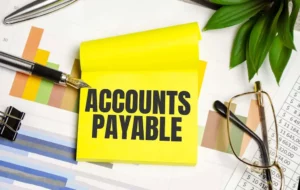Maintaining a stable cash flow is necessary to achieve consistent business growth. Ventures of all sizes strive to implement efficient solutions to enhance their financial stability. Nonetheless, invoices do not always get paid on time. If such issues occur, a company needs to focus on payment recovery to solve them. In this guide, we will consider how enterprises manage problems with duplicate or failed transactions and deal with overdue invoices. The most result-yielding strategies may include communicating with clients, suppliers, and service providers to collect funds.
Steps in the Payment Recovery Process
If managers see that some invoices haven’t been paid yet and are well past deadlines, they contact clients to clarify the reasons behind the delay. Businesses typically follow such guidelines when communicating with customers:
- Send payment reminders before invoices are due to ensure that everyone is on the same page;
- Deploy dedicated accounting software to automate the payment recovery process;
- Send and track notifications.
Working with suppliers requires a different approach, as it’s essential to analyze the invoices to discover possible errors causing delays. After detecting an issue hindering a process, a company’s managers contact suppliers with a refund or credit request.
To recover overdue payments, ventures send regular reminders specifying what fees and interest are added because of the delay. Creating a detailed plan is also a smart option to consider when dealing with customers who have issues with the available cash. Once a 90-day period expires, ventures may use the services provided by third-party agencies or take legal action. An alternative solution is to write off unpaid receivables. When choosing the best course of action, it’s better to embrace an approach that does not lead to substantial losses.
Tools and Technologies for Payment Recovery
Automating internal processes allows businesses to save time and reduce operational expenses. The deployment of dedicated software streamlines the process of retrieving funds. Such payment recovery solutions have the following advantages:
- Expedite procedures;
- Eliminate the possibility of human error;
- Ensure consistency.
Enterprises seek to simplify their payment processes to save valuable resources and invest more in development and growth. The usage of specialized programs simplifies failed payment recovery and allows ventures to discover duplicates. The implementation of AI-powered solutions and Large Language Models (LLMs) enables businesses to process large volumes of data more effectively.
Advanced software has special features designed to process details in search of information about non-matching records and other issues. Some programs can compare and match invoice amounts and dates, enabling managers to see what caused the problem and take the necessary steps to fix it. Customers may also use software with automated payment tools. The usage of such systems ensures full transparency of the payment process and facilitates dealing with overpayments and other possible issues. It allows enterprises to enhance and streamline their communication with clients and vendors.
Legal Aspects of Payment Recovery
Discuss the legal framework governing payment recovery, emphasizing the importance of compliance to avoid legal repercussions. Debt collection with the help of third-party services is a complicated and costly procedure, so it should be considered the last resort.
When an invoice remains unpaid for over 120 days, ventures take a specific course of action to obtain their funds. However, before such payment recovery steps can be taken, they should do the following:
- Send a final reminder specifying the amount due;
- Add copies of the available documents;
- Set a deadline for response (no longer than 4 weeks).
Before deciding to go to court to recover accounts receivable (AR), it’s essential to estimate legal costs. If they significantly exceed the amount owed, it may not be worth relying on this procedure. This approach is suitable when a company needs to retrieve a substantial sum and has already used other methods without success.
When dealing with failed payments, one should be aware of local and foreign laws to choose the most suitable strategy, depending on the jurisdiction. Businesses must follow the laws regulating cross-border operations and comply with data protection rules.
The usage of an approved accounting solution allows ventures to achieve transparency, improve the accuracy of records, and rely on secure bank card storage options to avoid disclosing data to third parties. Companies should train their staff to ensure they follow ethical guidelines and adhere to existing laws. Adopting transparency in billing methods is also necessary to avoid legal repercussions.
Tips to Recover Overdue Receivables
Adopting a clear communication policy makes it easier to discuss the terms of an agreement with customers and suppliers. Ensuring that invoices are paid on time requires using such communication tips to recover overdue receivables:
- Send automated reminders with an invoice 7 days before the due date;
- If a customer did not pay, write a detailed message 3 weeks after the set deadline mentioning interest and fees;
- Contact the client directly to discuss the issues causing the delays 35–45 days after the agreed deadline;
- If the other side fails to respond after 55–65 days after the due date, notify them that you won’t provide your products or services;
- After 90 days, send a final reminder, a solicitor’s letter, or a statutory demand.
Using these guidelines, companies maintain a professional approach to payment recovery. Discussing everything openly is the only way to strengthen client relationships and avoid losing funds.
During the negotiation stage, companies need to adjust their policies depending on the customer’s behavior. Informing a client that they will have to pay in advance is one of the best ways of ensuring timely reimbursements.
Factoring services are a suitable option for those willing to pay 10-30% to third-party providers to receive their payments. Whenever a venture sells its invoice, the fee increases, so it may be a smart idea to utilize other options first.
After integrating an intuitive payment gateway, enterprises see a decline in failed transactions or incomplete orders. Consulting consumers on how they can set up recurring payments is instrumental to eliminating issues impacting the cash flow.
Conclusion
Adopting efficient fund collection strategies, using advanced software, and deploying time-tested communication methods streamline the debt recovery process and enable businesses to expedite their workflows. Sending timely reminders and notifications is a surprisingly effective way of minimizing delays.
Ventures must streamline the ordering process and embrace the best payment recovery practices to maintain financial health. Writing off debts should be the last option to consider. This step enables firms to wrap up their books. BooksTime has a team of experts who help clients keep their records in order. Get in touch with our professionals and learn how to avoid overdue receivables when dealing with buyers and suppliers.


















